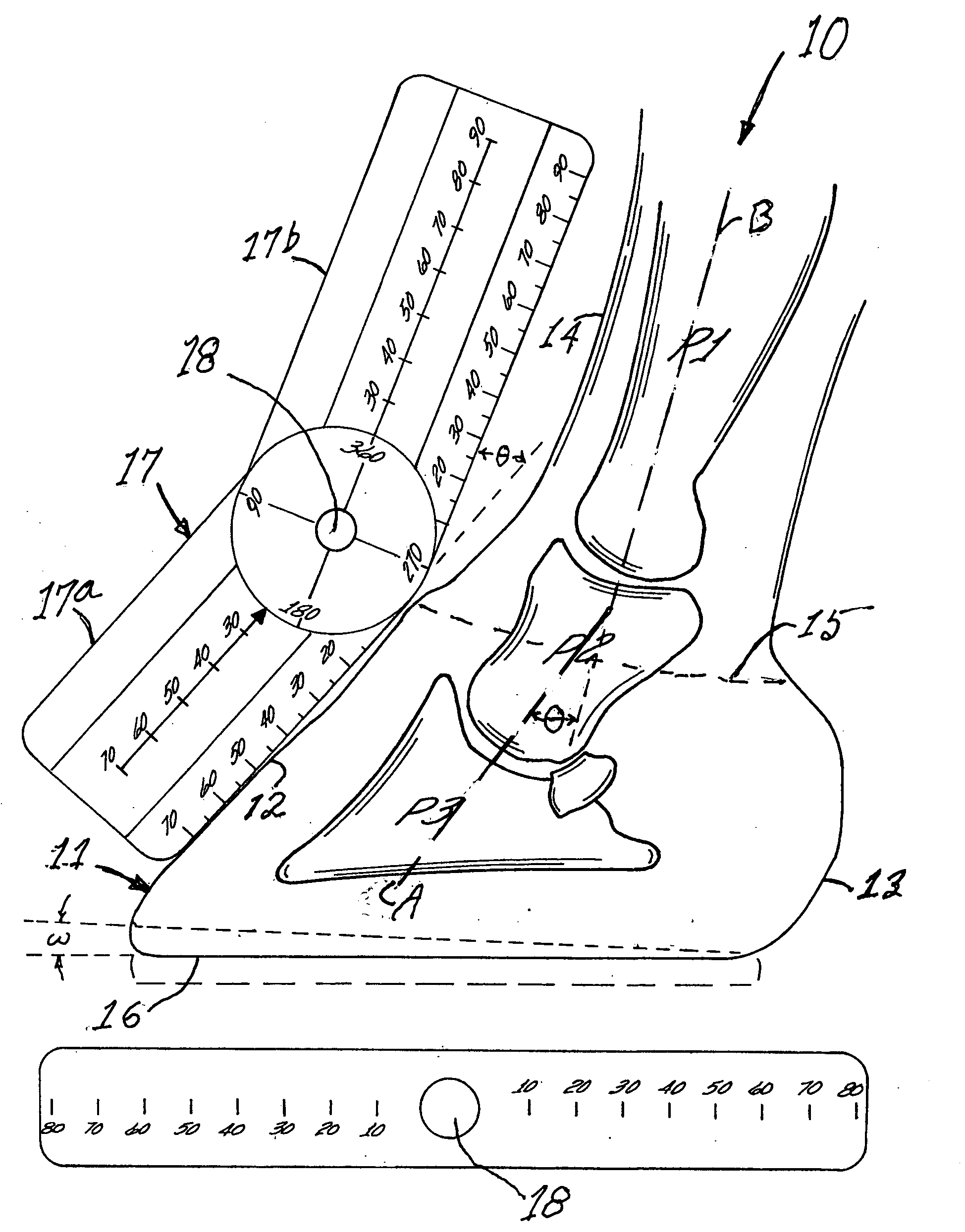Farrier's tool and method for using
a tool and tool technology, applied in the field offarriers tools and methods, can solve the problems of damage to the horse's feet and legs, lameness of the horse, and damage to the legs of the horse, and achieve the effect of reducing the torque on the bones and ligaments
- Summary
- Abstract
- Description
- Claims
- Application Information
AI Technical Summary
Benefits of technology
Problems solved by technology
Method used
Image
Examples
Embodiment Construction
[0012]Turning now to FIG. 1, the anatomy of the foot 10 of an unshod horse is shown in longitudinal cross-sectional view. The hoof 11 has an anterior or forward edge 12 and a heelbulb 13 on the rearward edge. The junction between the upper surface of the hoof 11 and the skin 14 is the coronet band 15. In addition to the bottom surface 16 of the hoof 11 being flat, the contour of the anterior (or forward) portion 16 of the hoof 12 is also important. When a horse lifts its hoof to walk, the heel leaves the ground first, temporarily transferring weight disproportionately to the anterior or forward edge 16 of the hoof. The rising foot rotates around a transverse axis in the foot which is called the break-over axis. If the lower surface of the forward portion of the hoof (or shoe) is flat, the weight transferred thereto creates a high torque which forces the hoofwall away from the coffin bone P3 which can result in damage thereto. In U.S. Pat. No. 7,165,623, the content of which is incor...
PUM
 Login to View More
Login to View More Abstract
Description
Claims
Application Information
 Login to View More
Login to View More - R&D
- Intellectual Property
- Life Sciences
- Materials
- Tech Scout
- Unparalleled Data Quality
- Higher Quality Content
- 60% Fewer Hallucinations
Browse by: Latest US Patents, China's latest patents, Technical Efficacy Thesaurus, Application Domain, Technology Topic, Popular Technical Reports.
© 2025 PatSnap. All rights reserved.Legal|Privacy policy|Modern Slavery Act Transparency Statement|Sitemap|About US| Contact US: help@patsnap.com


